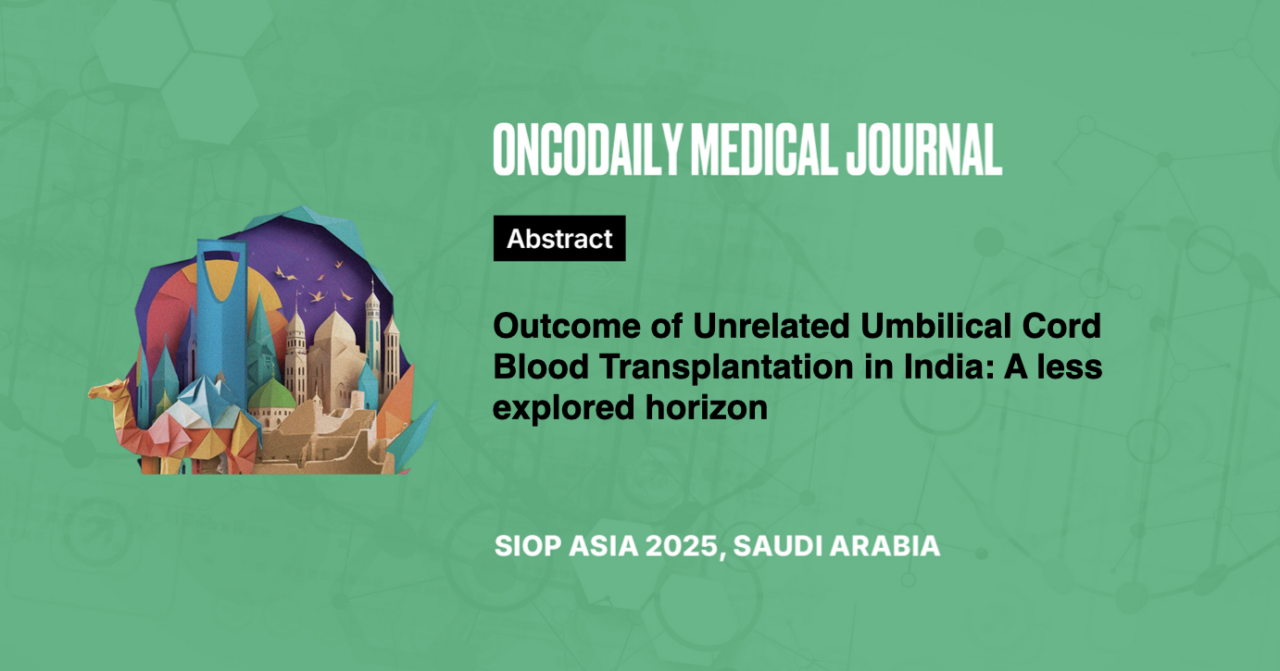Abstract
Introduction: In around 75% patients there is no available matched sibling donors (MSD) for hematopoietic-stem-cell-transplant (HSCT), hence haploidentical-donors, matched-unrelated-donors and umbilical cord blood (UCBT) remain the alternatives. Despite comparable outcomes and low graft-versus-host-disease (GVHD) rate, there is dearth of data on the clinical-outcomes of UCBT in India owing to limited use and experience.
Methodology: We analysed the outcomes and possible prognostic factors of UCBTs done at a single institution in India from 2011-2023. Conditioning regimens were based on known triplet combinations of thiotepa, busulfan, treosulfan, melphalan, cyclophosphamide, or fludarabine, along with antithymocyte globulin (ATG).
Results: Out of 20 patients transplanted, median age was 4y(0.25-17) with 75% males. While 55% were leukemia (AML/ALL), 45% were benign conditions (hemophagocytic-lymphohistiocytosis in 2 and one each of severe-combined-immunodeficiency, leukocyte-adhesion-defect, Wiskott-Aldrich syndrome, adenosine-deaminase-deficiency, mucopolysaccharidosis, porphyria and muscular-dystrophy). HLA-match was 6/6, 5/6 and 4/6 in 19%, 25% and 56% respectively. The countries of origin of the UCBT units were USA, Taiwan and India in 73%, 20% and 7% respectively. Majority(90%) received myeloablative conditioning. Median volume, CD34 dose, total-nucleated-cell dose and viability were 64ml, 3.3×105/kg, 9.6×107/kg and 95% respectively. Median time for neutrophil-engraftment and hospitalization were 28.5 days and 36.5 days respectively.
Bacterial, fungal and CMV infections were documented in 54%, 15% and 15% patients while veno occlusive-disease (VOD), transplant-associated-microangiopathy (TA-TMA) and acute graft-versus-host-disease (aGVHD) was present in 8% each. A transplant-related-mortality (TRM) of 20% was reported. With a median follow-up of 2yrs, disease-free-survival (DFS) was 40.3%, 77.8% and 10.2% in the overall population, benign and malignant cohorts respectively.
Conclusion: These results, the first and largest of its kind from India suggest that, UCBT remains a viable option, especially in non-malignant diseases in absence of MSD, while alternative donors (haploidentical- donors,or matched-unrelated-donors) should be considered for malignant conditions due to less graft-versus-leukemia effect and more relapses with UCBT. Infection control is of paramount-importance.





